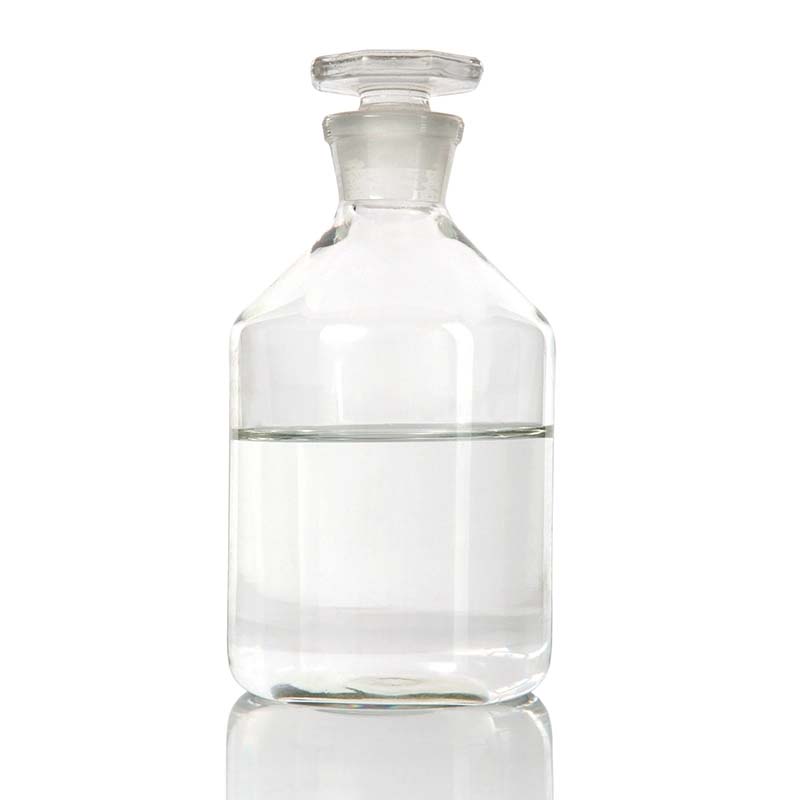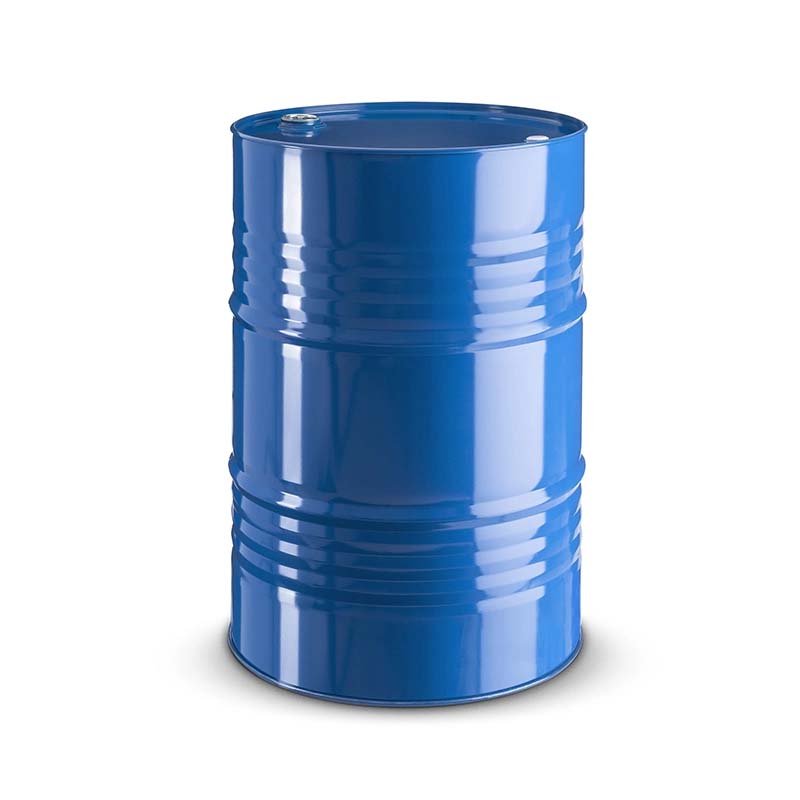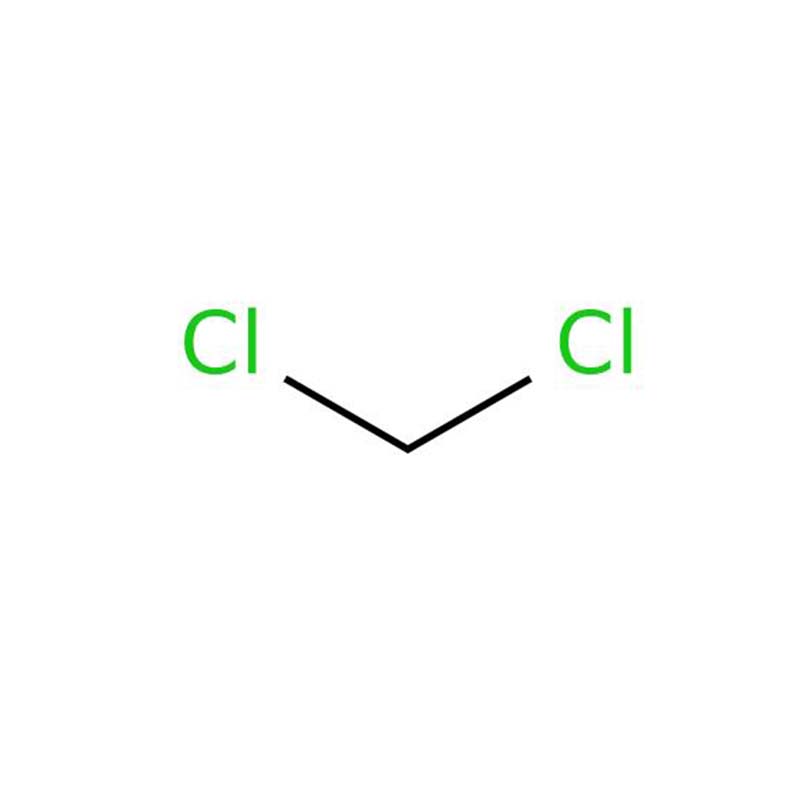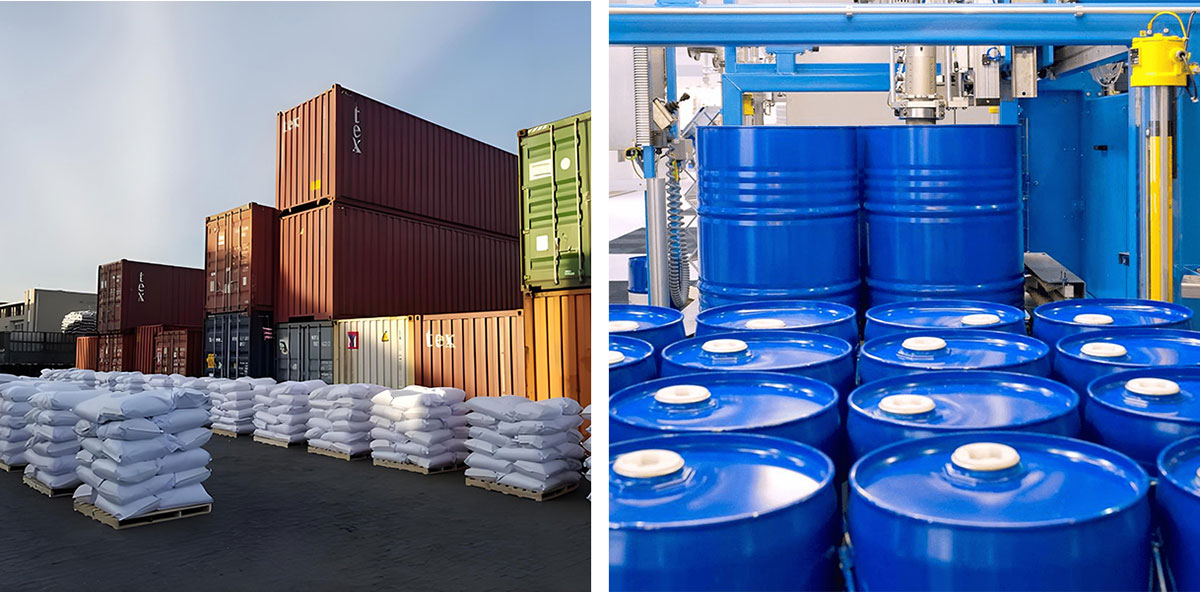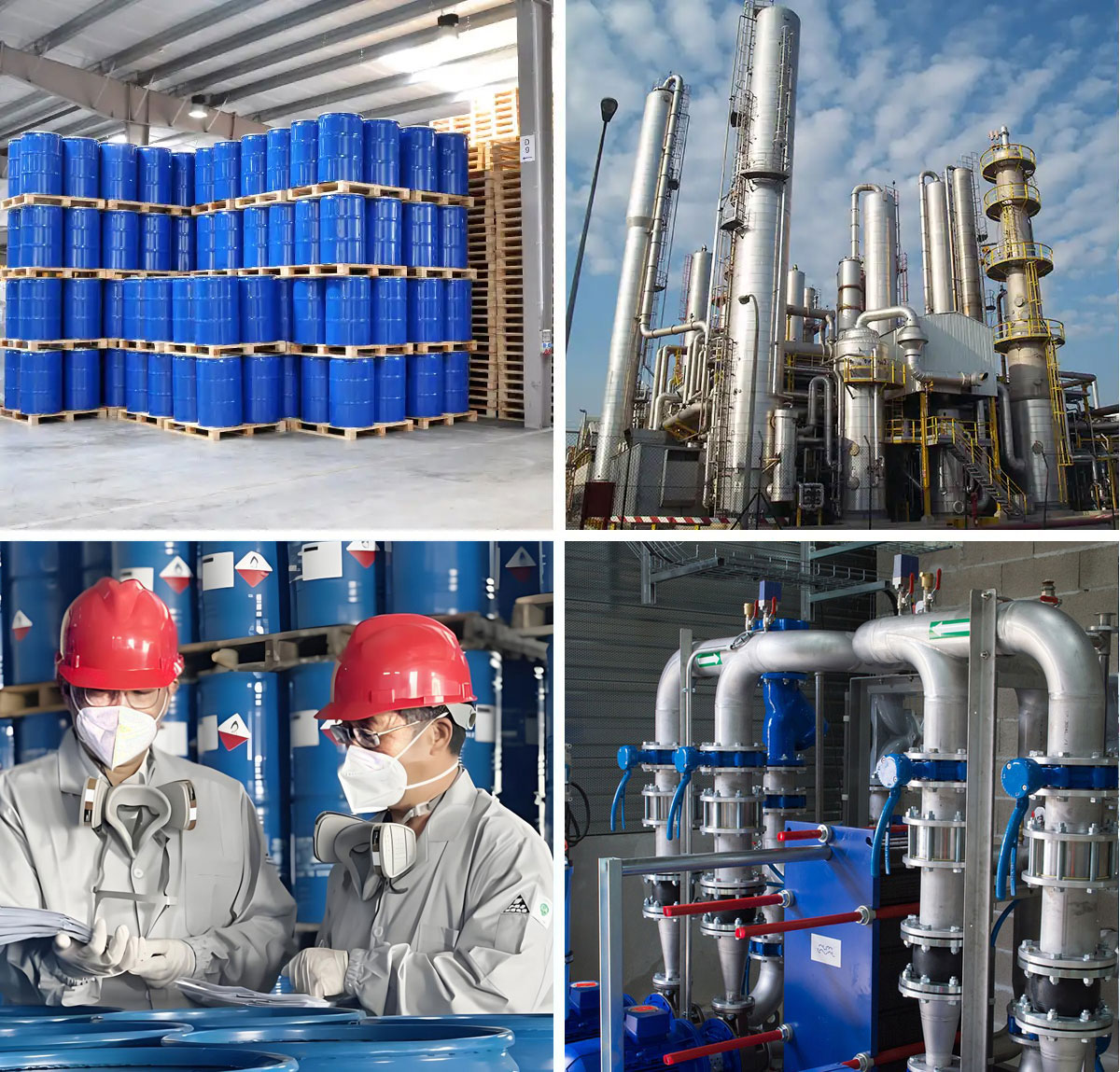Dichloromethane
Effective Solvent Properties: Dichloromethane exhibits high miscibility with numerous organic solvents, enhancing its adaptability across various industrial uses.
Non-Flammable Characteristic: Its non-flammable nature significantly improves operational safety during handling and application in manufacturing and processing.
Strong Performance in Paint Removal and Cleaning: Owing to its powerful solvent capabilities, dichloromethane is widely employed in paint stripping and industrial cleaning operations.
High Volatility: The compound’s volatile properties facilitate efficient extraction and separation processes, rendering it particularly useful in chemical manufacturing.
Dichloromethane, commonly referred to as methylene chloride, is a chlorinated hydrocarbon derived from methane by substituting two hydrogen atoms with chlorine atoms, resulting in the chemical formula CH₂Cl₂. It is a colorless, transparent liquid that is denser than water and emits a faint, sweet aroma reminiscent of ether. Although dichloromethane itself is non-flammable, it can form explosively combustible mixtures in highly oxygenated environments. The compound has limited solubility in water but demonstrates miscibility with numerous organic solvents—including chlorinated compounds, ethers, ethanol, and N,N-dimethylformamide—in all proportions. Owing to its high volatility and strong solvent power, it is extensively utilized in applications such as paint removal, industrial cleaning, and chemical extraction processes.
Parameters
Melting point | -97 °C |
Boiling point | 39.8-40 °C mm Hg(lit.) |
density | 1.325 g/mL at 25 °C(lit.) |
vapor density | 2.9 (vs air) |
vapor pressure | 24.45 psi ( 55 °C) |
refractive index | n20/D 1.424(lit.) |
Fp | 39-40°C |
storage temp | room temp |
solubility | Miscible in ethyl acetate, alcohol, hexanes, methanol, diethyl ether, n-octanol, acetone benzene, carbon tetrachloride, diethyl ether and chloroform. |
form | Liquid |
color | APHA: ≤10 |
Specific Gravity | 1.329 (20/20℃) |
Odor | Odor threshold 160 to 230 ppm |
PH | 7 (20°C) |
Odor Threshold | 160ppm |
explosive limit | 13-22%(V) |
Water Solubility | 20 g/L (20 ºC) |
λmax | λ: 235 nm Amax: 1.00 |
Merck | 14,6063 |
BRN | 1730800 |
Henry's Law Constant | 2.49 at 30 °C (headspace-GC, Sanz et al., 1997) |
Dielectric constant | 9.1(20℃) |
Exposure limits | TLV-TWA 50 ppm (~175 mg/m3) (ACGIH); carcinogenicity: Suspected Human Carcinogen (ACGIH), Animal Sufficient Evidence, Human Inadequate Evidence (IARC). |
Stability: | Volatile |
LogP | 1.250 |
Surface tension | 26.5mN/m at 20°C |
CAS DataBase Reference | 75-09-2(CAS DataBase Reference) |
NIST Chemistry Reference | Methylene chloride(75-09-2) |
IARC | 2A (Vol. Sup 7, 71, 110) 2017 |
EPA Substance Registry System | Methylene chloride (75-09-2) |
Absorption | in accordance |
Safety Information
Hazard Codes | Xn,T,F,N,C |
Risk Statements | 40-39/23/24/25-23/24/25-11-67-36/37/38-68/20/21/22-20/21/22-50-37-34 |
Safety Statements | 23-24/25-36/37-45-16-7-26-61-36/37/39 |
RIDADR | UN 1593 6.1/PG 3 |
WGK Germany | 2 |
RTECS | PA8050000 |
F | 3-10 |
Autoignition Temperature | 556 °C |
Hazard Note | Harmful |
TSCA | Yes |
HS Code | 2903 12 00 |
HazardClass | 6.1 |
PackingGroup | III |
Hazardous Substances Data | 75-09-2(Hazardous Substances Data) |
Toxicity | LD50 orally in young adult rats: 1.6 ml/kg (Kimura) |
IDLA | 2,300 ppm |
Dichloromethane is valued for its high solvency and comparatively low toxicity. It finds widespread application in the manufacture of safety films and polycarbonates. It is also employed as a solvent in coatings, a degreasing agent for metals, a propellant in aerosols, a blowing agent for polyurethane foam, a mold release agent, and an effective paint remover. In the pharmaceutical sector, this colorless liquid is used as a reaction medium, notably in the production of antibiotics such as ampicillin, hydroxybenzyl penicillin, and cephalosporins. Additional uses include serving as a solvent in film processing, a dewaxing agent in petroleum refining, an extractant in organic synthesis, a foaming agent for various foam plastics including polyurethane, and as a cleaning agent for metallic surfaces.



